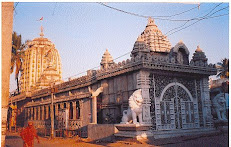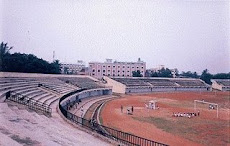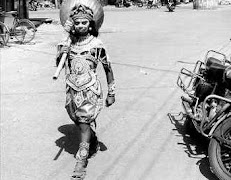Olive Ridleys start venturing onto the Rushikulya rookery beach
BERHAMPUR:Olive Ridleys ventured onto the famous Rushikulya rookery beach near Berhampur city for mass nesting from March 14 night. It ended the worried wait of the environmentalists and people involved in marine turtle protection. In comparison to 2009, the mass nesting of Olive Ridleys at Rushikulya river mouth coast was delayed by around a month this year. It again hinted that mood and pattern of nesting of Olive Ridleys still continues to be a mystery, said B.C. Choudhury, the project director of the collaborative sea turtle conservation project of the Wildlife Institute of India (WII) and the Orissa Forest Department (OFD).
Tearing the darkness, thousands of these female Olive Ridleys started coming out to the stretch of beach between Gokharkuda and Kantiagada near Rushikulya river mouth from 3 a.m. As per forest officials, more than 10,000 turtles came for mass nesting on the first day. The Berhampur Divisional Forest Officer, A.K. Jena, said the nesting process continued even during day time. Nesting was more concentrated towards Kantiagada where the beach had suffered less erosion. Even during noon a few Olive Ridleys continued to come to the beach to lay their eggs. The mother turtles dug up holes in the sand with their flappers to lay the eggs and bury them in sand for gestation. Mr Jena said they expected the mass nesting to continue for around a week.
Although there was a large congregation of these endangered turtles in the sea near the Rushikulya rookery since past few months, there was delay in their mass nesting. This year Olive Ridleys preferred to have mass nesting at Gahirmatha coast first. It may be noted Gahirmatha and Devi river mouth coast are the other two major sites for mass nesting of endangered Olive Ridley turtles in Orissa.
Past experience
The mass nesting of these turtles started at Gahirmatha coast from February 24. Mr. Jena said past experience had shown that after mass nesting at place on Orissa coast, the Olive Ridleys usually take a gap of fortnight for mass nesting in another coast, which has happened this year for mass nesting at Rushikulya rookery. The mother turtles depart into sea after laying eggs. The turtle eggs buried in sand hatch on their own after the gestation period of 45 days.
Source: The Hindu


















.jpg)


















































No comments:
Post a Comment